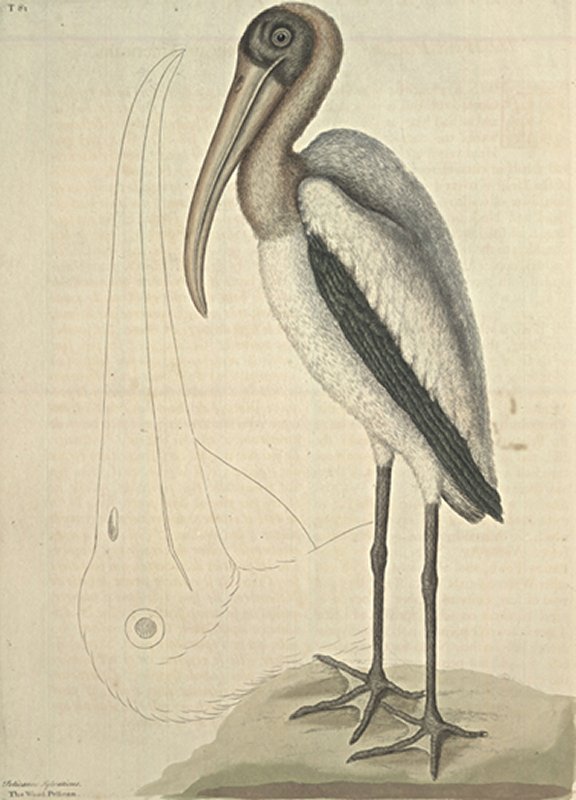Plate Number: I 81Pelicanus Americanus: The Wood Pelican This is about the bigness of a Goose; the Bill is nine inches and an half long, and curved towards the end, and next the Head very big, being six inches and a half in circumference. The fore-part of the Head is cover'd with a dark-blewish skin, bare of feathers, the back-part of the Head and Neck brown. The Wings are large: all the lower part of them, from the Shoulders to the ends, particularly the quillfeathers, appear black at a distance, but are shaded with green: the upper part of the Wing is white: the Tail is black, very short, and square at the end; all the rest of the Body is white. The Legs are black and very long, the Feet webbed; not so much as those of a Duck, but are joined by a Membrane reaching to the first joint of every toe, except the hindmost, which has no Membrane, and is longer than common. That which demonstrates this Bird to be of the Pelican-kind, is the Pouch under the Bill, tho' it is small, and contains not more than half a pint. In the latter end of Summer there usually fall great rains in Carolina, at which time numerous Flights of these Birds frequent the open Savannas, which are then under water, and they retire before November. They are very good Eating Fowls, tho' they feed on Fish and other Water-animals. It is a stupid Bird and void of fear, easily to be shot. They fit in great numbers on tall Cypress and other Trees in an erect posture, resting their ponderous Bills on their Necks for their greater ease. I could not perceive any difference in the colours of the Male and Female. |